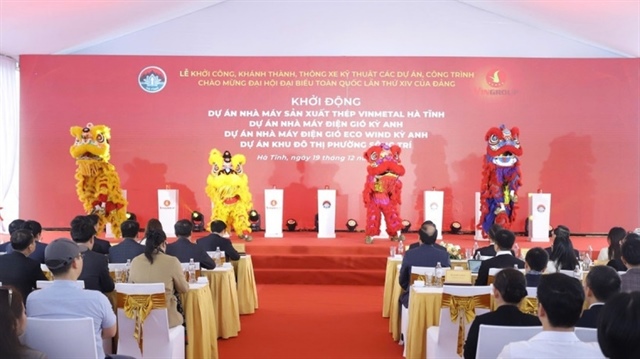VN food products present, but invisible: experts
VN food products present, but invisible: experts
Vietnamese food products have significantly increased their presence in world markets, but they remain unknown because they lack brand identification and consciousness in the consumer’s mind.

Urgent action would be required to change this situation, local and international experts said yesterday.
Leon Trujilo, an expert with the Netherlands’ Centre for Promotion of Imports from Developing Countries (CBI), told a seminar in Ha Noi that Viet Nam was a strong supplier of many agricultural products and foodstuff to the world, but global consumers were hardly aware of this.
“There is a big gap between what Viet Nam is capable of and what the world knows about Viet Nam. Therefore, it is necessary to fill the gap by mapping out a strategic direction for brand building and promoting the image of the country’s food industry,” Trujilo said.
Claudio Dordi, Technical Assistance Team Leader for the the EU-Viet Nam Multilateral Trade Assistance Project (EU-VN MUTRAP), told Viet Nam News that Europeans still don’t have a particular perception of food products from Viet Nam, because the country mainly exports raw material or non-processed products.
“Since you focus on exporting raw material rather than building up overall brand marketing and distribution strategies, the value remaining for Vietnamese firms is still limited,” Dordi said.
He said Viet Nam needed to expand and upgrade the value chain for its food products especially those produced for export. But this would require a lot of investment in terms of technology, human resources as well as capital.
Trujilo remarked that while many localities and businesses embarked on building their own brands, the limited resources at their disposal, both in terms of personnel and finance, meant that the newly-generated brands remained small and non-competitive in the global market.
Brand identity
Deputy Minister of Industry and Trade, Tran Quoc Khanh, said at the seminar that building a food brand strategy was part of a national branding programme targeting Viet Nam’s export goods in highly competitive fields.
“The Vietnamese food industry has tremendous potential for growth, not only serving domestic demand but also in boosting the country’s exports, so it receives a lot of attention from the Government and relevant agencies,” Khanh said.
Trujilo said the programme for building a brand strategy for Viet Nam’s food industry, being implemented by the Ministry of Industry and Trade (MOIT), the CBI and EU-VN MUTRAP, had basically completed its research and proposed the concepts of “brand positioning”, “brand architecture” and “visual brand identity” for the food industry.
Based on the results of surveys and opinions from experts, relevant associations and enterprises, the programme proposed a slogan for the food industry: "Viet Nam - the food basket of the world."
This slogan, together with an official visual brand identity expressed with meaningful graphics, would promote the image and increase recognition of Viet Nam’s food products in the world market, Trujilo said.
Late last year, Deputy Prime Minister Trinh Dinh Dung had issued a circular asking the Ministry of Industry and Trade (MoIT) to co-ordinate with ministries, agencies and associations to implement the programme on building a brand strategy for Vietnam’s food industry.
Soon after, a memorandum of understanding was signed by the MoIT’s Viet Nam Trade Promotion Agency, the CBI and EU-VN MUTRAP.
Quality control
Dordi said that besides the designing and branding of products, firms would need to focus a lot on quality, which is a decisive factor for boosting exports.
“In the last five years, we have been supporting different Vietnamese brands including Buon Me Thuot coffee, Vietnamese dragon fruit, mango and Phu Quoc fish sauce. One of the key elements we had to focus on is building up a quality control system for those products,” Dordi told Viet Nam News.
Whenever firms decide to sell their products abroad, they must ensure that their products are of good quality. “If you have a very good brand, but low quality product, you will definitely lose the market,” Dordi said.
"Quality does not merely mean safety", he added, explaining that products should also meet customers’ tastes. "Besides focusing on a stronger branding strategy, local firms need to research cultural preferences, hobbies and buying habits of each type of customer in different markets," he said.






















